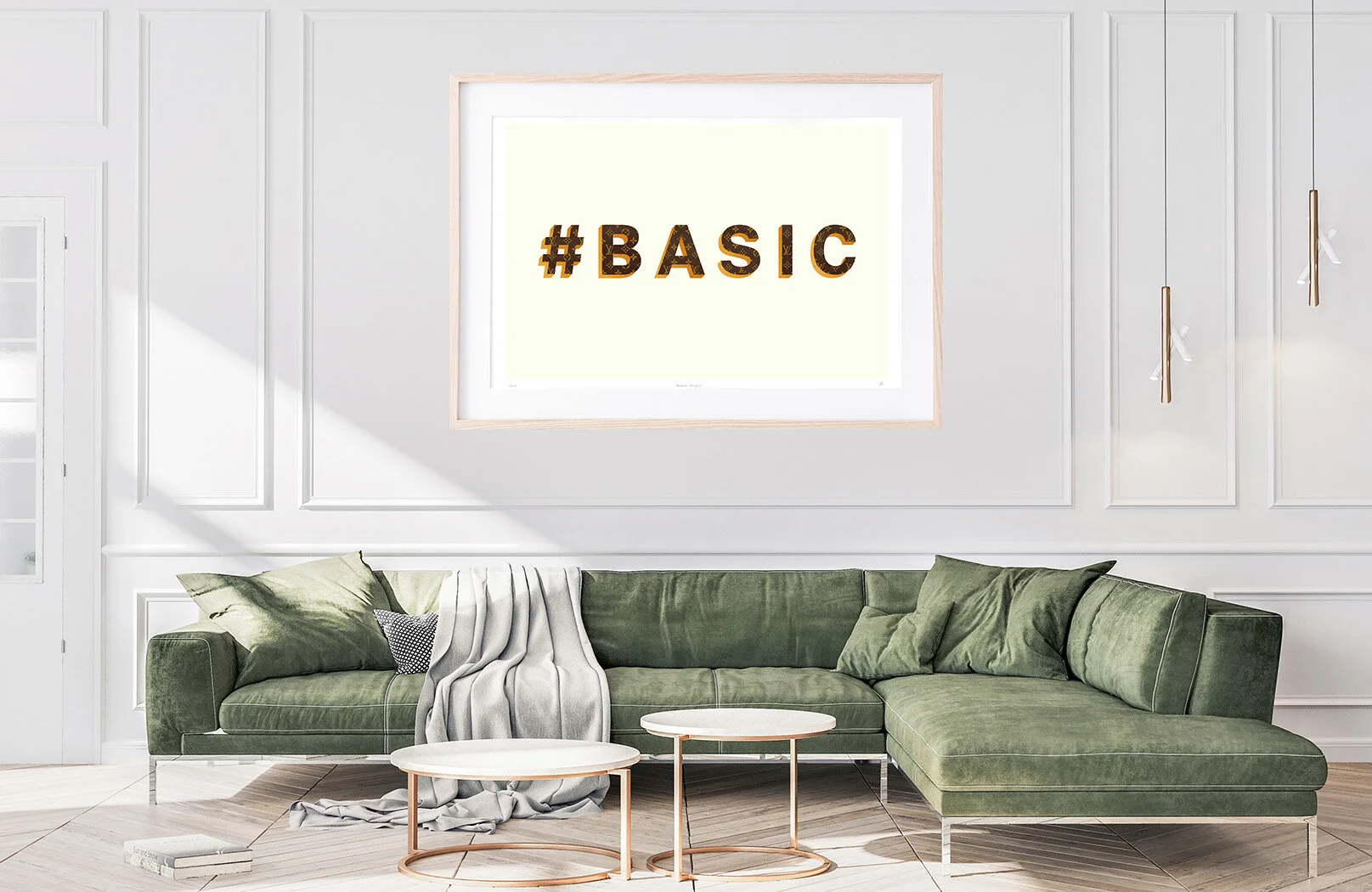About the Artwork
“#BASIC”
40 W x 30 H in
102 W x 76 H cm
Archival Pigment Print
Limited Edition of 250
Signed and Numbered
© Priyank Salecha
2021
#BASIC” explores the birth of a modern religion where characters have replaced characteristics. This limited-edition print explores identity through objects of status. The rapid advancement of technology has created a language where logos, abbreviated vocabulary, emojis, gifs, and the coveted blue check mark, have replaced traditional linguistic values. “#BASIC” explores how labels become icons through immediate recognition, transcending the need for language.
“#BASIC” has been birthed from a unique sculpture and has morphed into an ongoing series “Modern Religion”, exploring 21st century culture and its emotional effects. As a print, “#BASIC” has been stripped of every unnecessary visual other than the minimal necessity of recognition. Much as technologically enabled mass-produced luxury goods themselves, the concept morphed into a multiple, rendering it accessible to a larger audience. The viewer is offered an experience that is symbolic rather than material.
“#BASIC” traces its roots back to various art movements of the latter half of the 20th century including minimalism, pop, and text art. The object floating in its very loud empty space reexamines the classic concept of figure versus ground. It becomes devoid of any external visual context outside of the cerebral. As a text-based artwork, the logo now becomes the primary artistic component and imitates the real world where labels take visual precedence. In our world of “Babel,” the immediate recognition of advertisement by iconography makes language an unnecessary distraction. Like the iconic images of luxury branding, the merger of text art and pop iconography questions the nature of consumption, taste, and status. The immediacy of recognition pronounces its worth. Pop art has used the “supposed relevancy” of the mostly irrelevant and made it into high art.
In our contemporary climate, “#BASIC” raises new questions about a dystopic world no longer consumed by goods, but by symbols. Have we failed at something more fundamental, for both ourselves and for the objects that consume and enrich our lives?




